10 Gorgeous Green Birds of the Americas
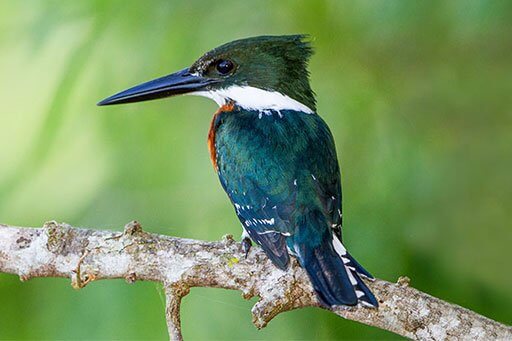
While the color green is commonly associated with parrots and parakeets, it's actually found in a range of birds throughout the Western Hemisphere and the wider world. Some of these species, like the Green-winged Teal, sport small gem-like green patches, whiles others, such as the Glistening-green Tanager (see below) radiate an emerald glow from head to tail.
For those eager to bask in the beauty of green birds, you've come to the right spot. We've compiled an illustrated list of 10 of the most gorgeous green birds found in the Americas, with useful information about their ranges as well as conservation threats.
Before jumping in, take a look below to learn a little about what makes green feathers green (hint: the answer is in the eye of the beholder) and why green is a safe color for some birds. Also, don't forget to scroll to the bottom, where you'll find information on ways to get involved to protect these and other bird species.
It Pays to Be Green: A Quick Guide to Green Feathers
Birds really shine when it comes to color. In fact, among vertebrates they rank first in terms of color variety. However, bird hues aren't always what they seem. Many of the brilliant bird colors we experience are actually the result of refracted, or bent, light waves. This effect is caused by micro-structures in feathers that scatter long wavelengths and reflect shorter ones, including blues, purples, and, of course, greens.
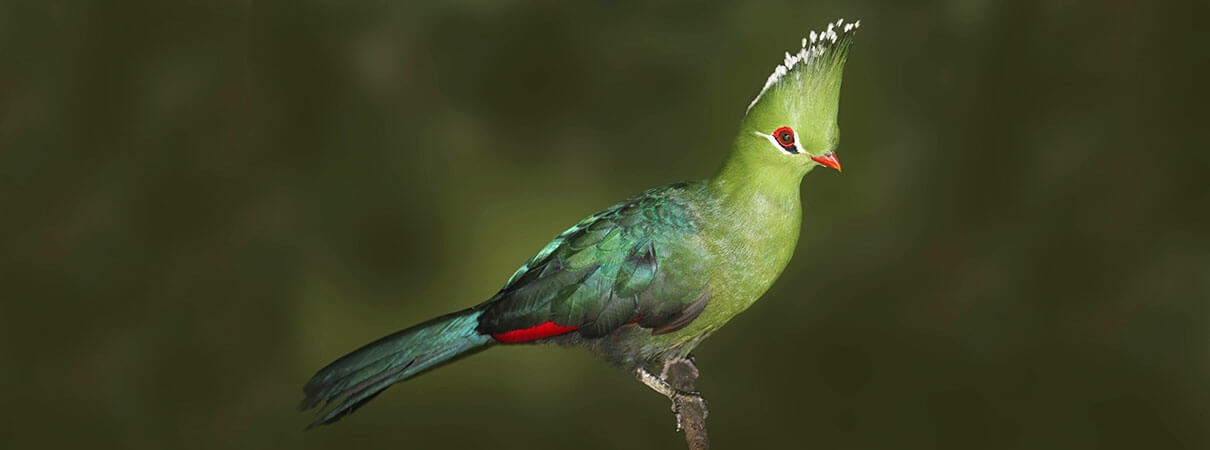
Of the hundreds of green birds found in the world, only a few African species, called turacos, are really, truly green. That's because the turacos' green coloring comes not from refracted light, but from a unique pigment called turacoverdin.
Regardless of the color's source, being green is a serious matter for birds and may, perhaps, be cause for some envy. Why? Green provides an ideal camouflage, allowing birds to elude would-be predators by blending in with leafy-green environments. But being green isn't good for all birds. Some species that live closer to the forest floor have adapted accordingly with darker and browner colors that provide the camouflage they need.
Glistening-green Tanager
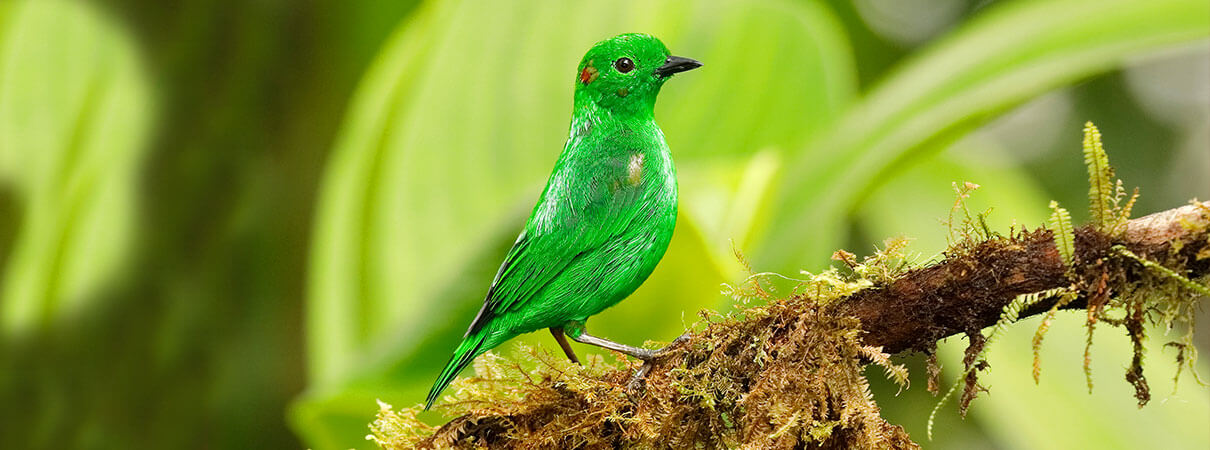
True to its name, the Glistening-green Tanager is almost entirely clad in vivid emerald-green plumage, save for small tufts of grayish and orange feathers behind its eyes. This tanager has a restricted range on the western slope of the Andes in Colombia and Ecuador, where it is considered uncommon and declining. Its rainforest home is threatened by mining, agriculture, and expanding development.
Green Kingfisher
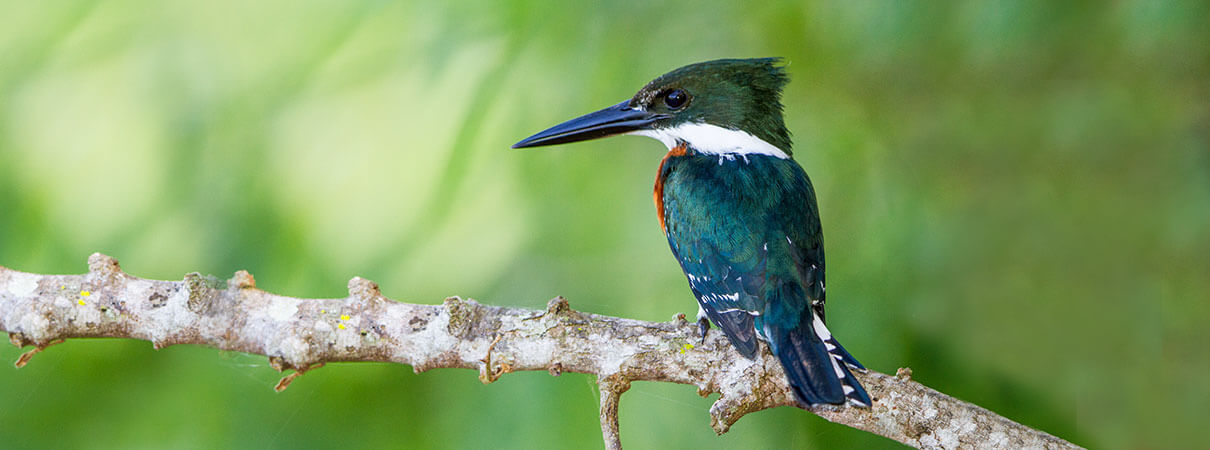
The Green Kingfisher's striking forest-green head and dark teal-green wings are a treat for birdwatchers. Its massive range extends from southern Arizona and Texas all the way through South America to the northern reaches of Patagonia. In the United States, Green Kingfisher populations declined during the last century as a result of urbanization, irrigation practices, and livestock grazing. While Green Kingfishers have managed to rebound at some sites, they face widespread challenges throughout their range that include degraded riparian woodlands, water pollution, and overgrazing.
Northern Emerald-Toucanet

With an olive head, lime breast, and jade-colored wings, the Northern Emerald-Toucanet's plumage is feast for the eyes. This small toucan is found in humid montane forest from southern Mexico to Nicaragua. Despite its relatively wide distribution, populations of the Northern Emerald-Toucanet are believed to be in decline due to habitat destruction.
Violet-green Swallow
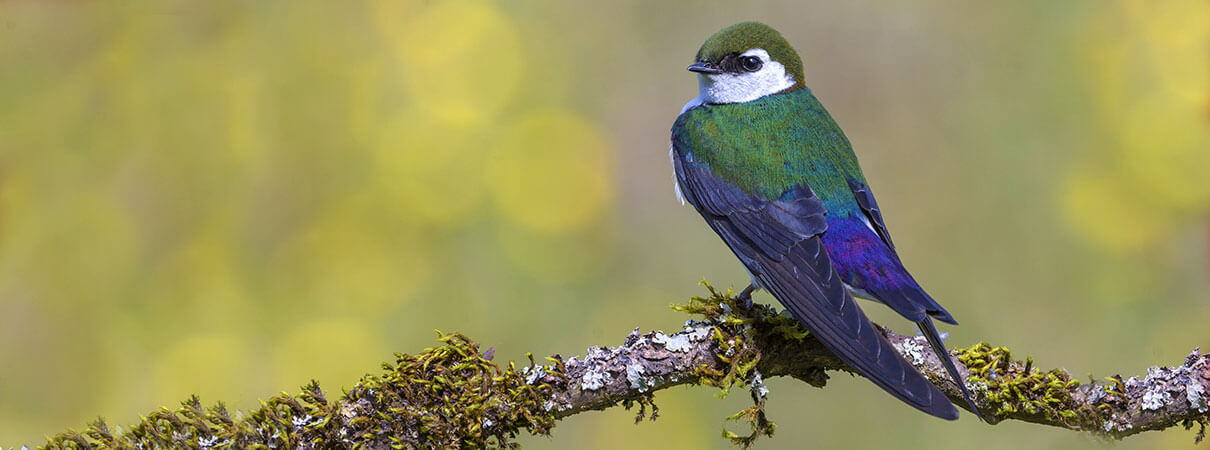
When caught in the right light, the Violet-green Swallow dazzles observers with its iridescent green back and purple rump. Three subspecies of Violet-green Swallow are recognized, one migratory and two resident in Mexico. The migratory subspecies breeds west of the Rockies, from central Alaska and western Canada south to Mexican highlands. The Violet-green Swallow is fairly common throughout its range but is affected by the loss of natural nest cavities due to deforestation, plus competition with other birds for remaining nesting sites. Like other aerial insectivores, the Violet-green Swallow also faces threats from pesticides, including the neonicotinoid insecticides, which decimate its prey.
Great Green Macaw
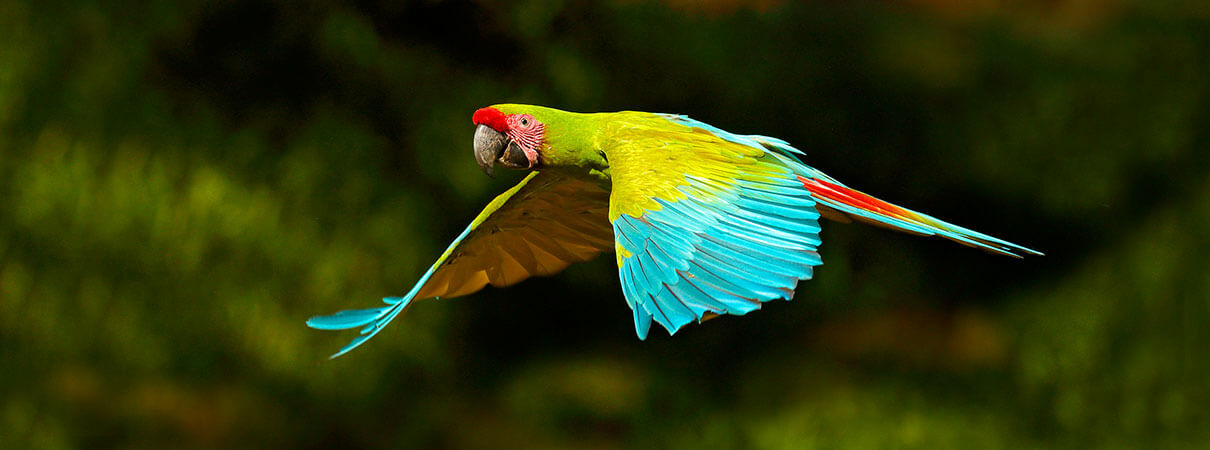
With its lime-green neck and breast highlighted with cerulean wings and a crimson forehead, the Great Green Macaw is a stunning sight. Found in a few remaining large areas of lowland humid forest from Honduras to Ecuador, this majestic macaw has experienced devastating population losses in recent decades that have halved its numbers. This decline is due to capture for the illegal bird trade and extensive habitat loss throughout the species' range. The Great Green Macaw is considered Critically Endangered by the IUCN and was listed as an Endangered species by the United States in 2015.
Green Jay
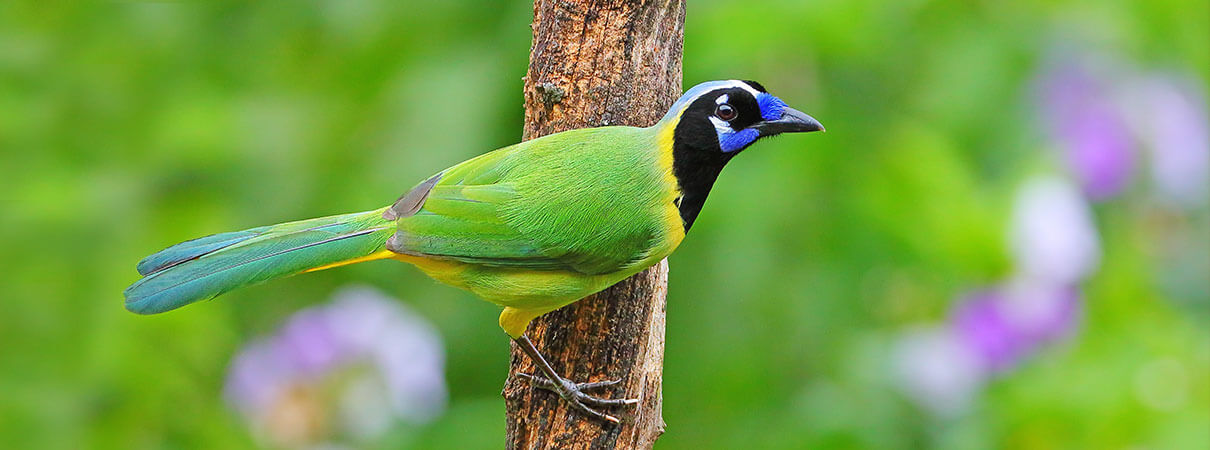
The brilliantly colored Green Jay brings a bright splash of blue, green, and yellow to the dry scrub of South Texas — the only place in the United States where it can be found. These sociable green birds aren't just colorful, they're also extremely intelligent, having been observed using sticks to pry back bark in search of insect prey. The Green Jay has a wide range with distinct populations found in Central and South America. Although the Green Jay is still considered common, some populations face specific challenges. The South Texas population, for example, is regularly parasitized by the Bronzed Cowbird, which may limit the jay's numbers in that state.
Green-breasted Mango
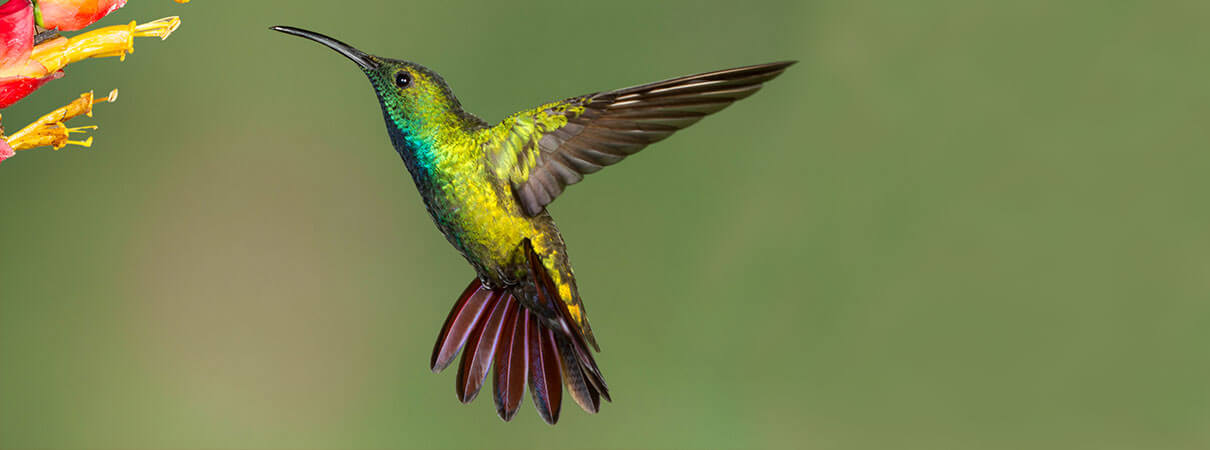
The iridescent feathers of the Green-breasted Mango, which sparkle with lime and teal colors in the light, contrast dramatically with this bird's dark-purple tail feathers. The Green-breasted Mango is found in mangrove forests, savannas, and semi-open habitat throughout its range, which spans from eastern Mexico to Costa Rica and northwestern South America. Despite its current IUCN status as a species of Least Concern, the Green-breasted Mango remains vulnerable to deforestation and habitat loss.
Green Parakeet
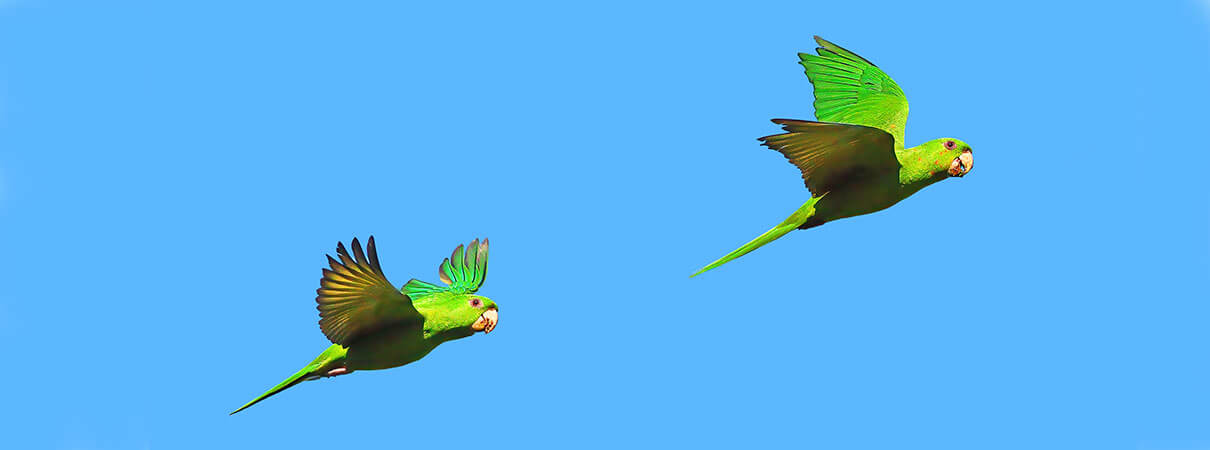
Sporting lime-green feathers from beak to tail, Green Parakeets are hard to miss when they take to the sky. Found from southern Texas to northern Nicaragua, with an isolated population in western Mexico, Green Parakeets avoid humid forests, preferring instead deciduous woodlands, scrublands, and forest edges. Although these parakeets remain relatively common in the wild, they face dangers from habitat destruction and the pet trade.
Resplendent Quetzal
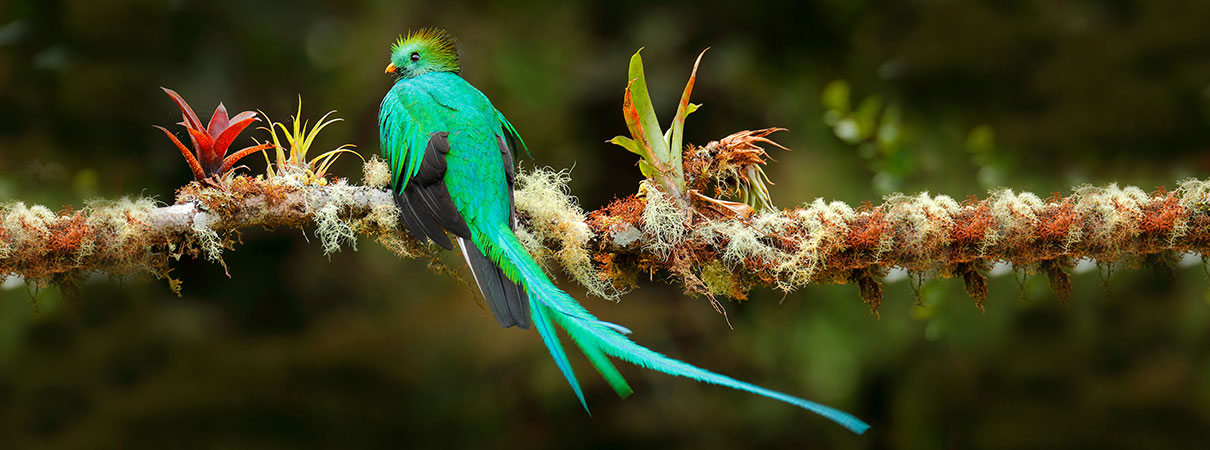
Considered one of the most stunning birds on Earth, the Resplendent Quetzal shines with a rich, teal-green color. Considered divine by pre-Columbian cultures, this long-tailed member of the trogon family lives in montane cloud forest in parts of southern Mexico and Central America. Although reliable population trend data is lacking, scientists believe the Resplendent Quetzal may be the most threatened species in its family. Primary threats to this species include habitat loss and climate change.
Grass-green Tanager
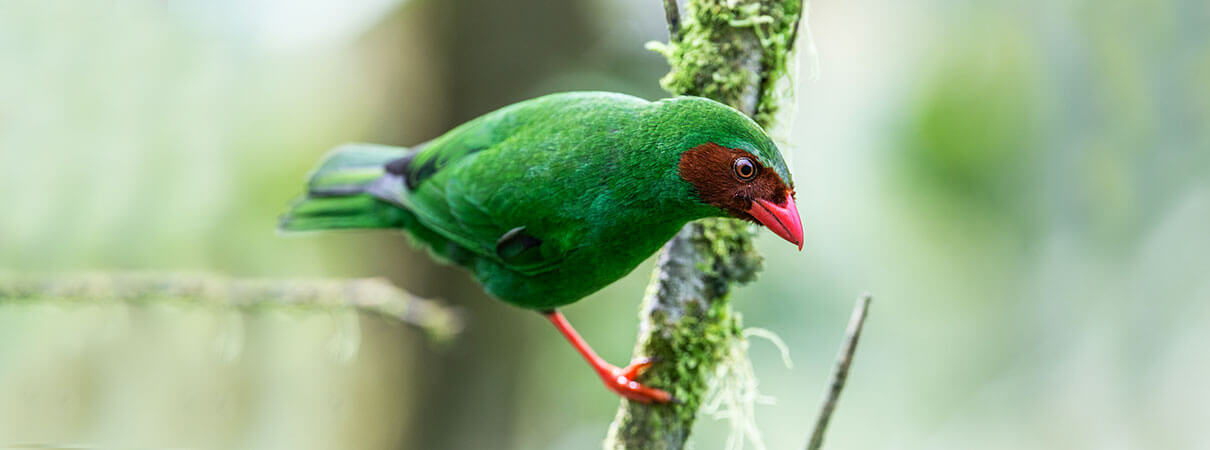
This Andean bird is an unmistakable sight, primarily covered in intense green plumage accented with a chestnut mask and undertail and bright red legs, feet, and bill. The Grass-green Tanager is found in humid Andean forests from Colombia to Bolivia. Although not endangered, the Grass-green Tanager is still vulnerable to habitat loss caused by farming, grazing, logging, and human settlement.
Birds in Trouble
Green birds, of course, aren't the only bird species facing threats. In less than a single human lifetime, 2.9 billion breeding adult birds have been lost from the United States and Canada, across every ecosystem. This includes familiar birds: The Dark-eyed Junco has lost an incredible 175 million individuals from its population. The White-throated Sparrow has lost 93 million.
Scientists have identified habitat loss as the biggest overall driver of bird declines. Habitat degradation is a second cause of losses. In this case, habitat doesn't disappear outright but becomes less able to support birds, such as when habitat is fragmented or altered by invasive plants, or when water quality is compromised.
Aside from habitat loss and degradation, other major human-caused threats to birds come from cats and other invasive species; collisions with glass and industrial infrastructure such as communications towers and wind turbines; and exposure to pesticides and other toxics.
Climate change exacerbates these threats, and also creates new challenges, for example, by changing habitat distributions and shifting the timing of peak food supplies for birds.
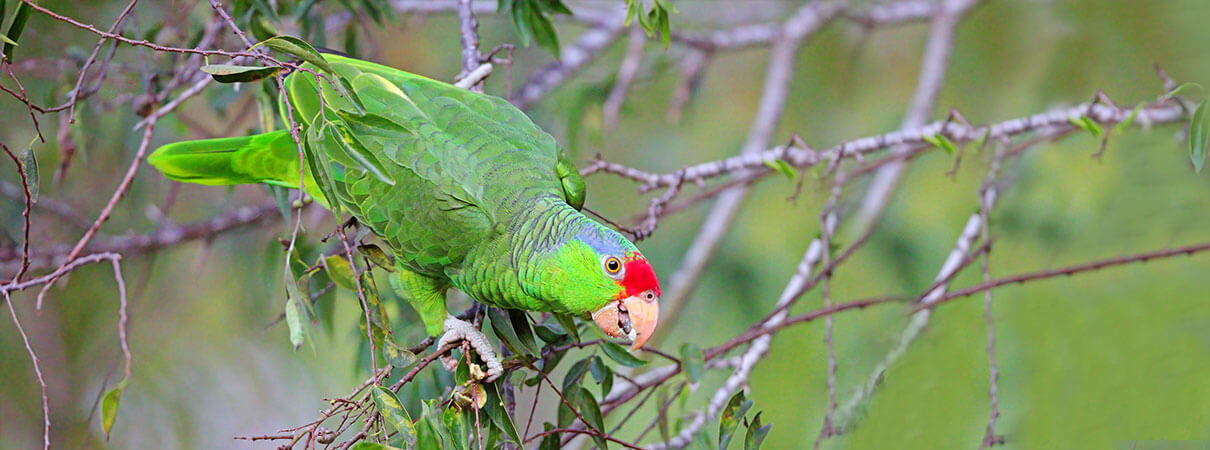
How You Can Help Birds of All Colors
We all can do our part to protect birds.
American Bird Conservancy and our Joint Venture partners have improved conservation management on 6.4 million acres of U.S. bird habitat — an area larger than the state of Maryland — over the last ten years. This is a monumental undertaking, requiring the support of many, and you can help by making a gift today.
Policies enacted by Congress and federal agencies, such as the U.S. Fish and Wildlife Service, have a huge impact on America's birds. You can help shape these rules for the better by telling lawmakers to prioritize birds, bird habitat, and bird-friendly measures. To get started, visit ABC's Action Center.
Finally, don't overlook the impact you can have at home. Living a bird-friendly life can have an immediate impact on the birds around you. Doing so can be as easy as adding native plants to your garden, avoiding pesticides, and keeping cats indoors. To learn more, visit our Bird-Friendly Life page.


















































